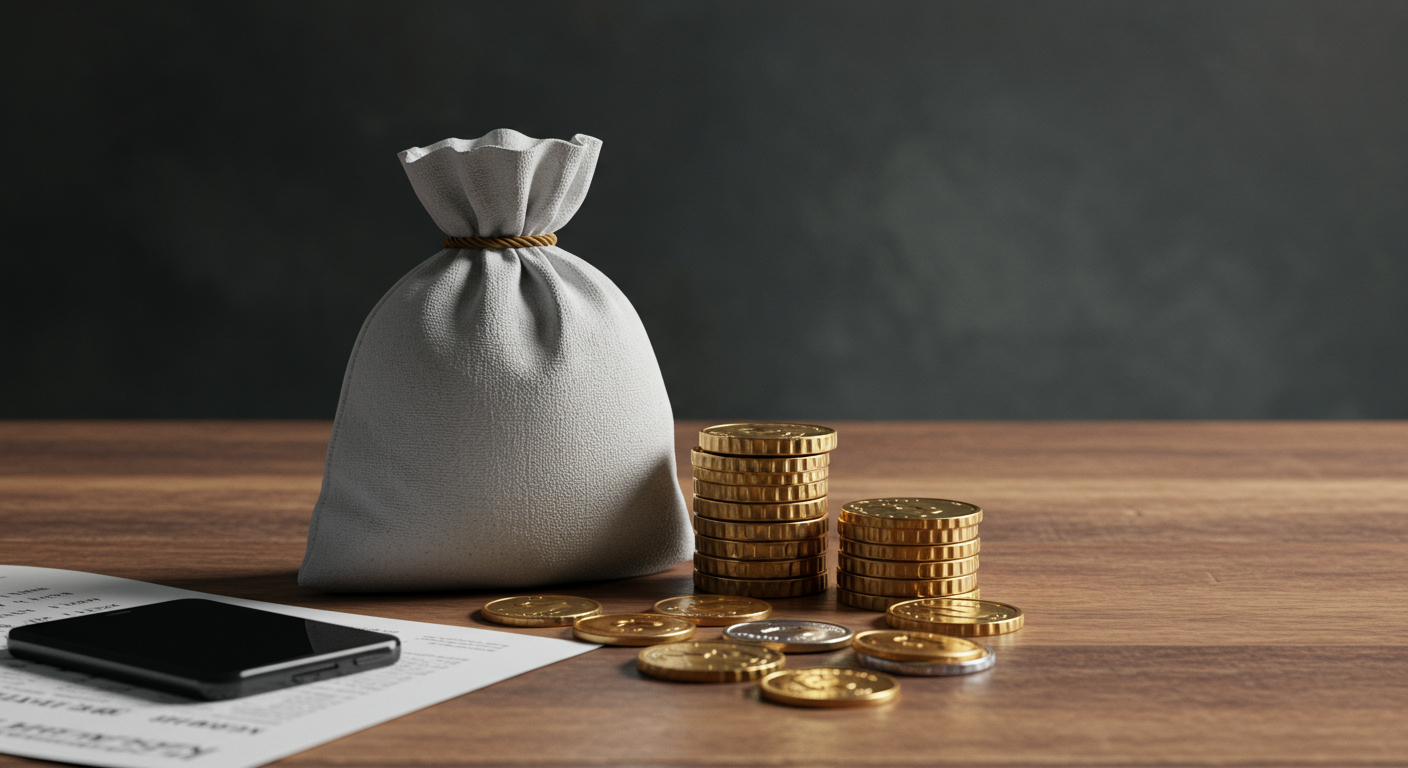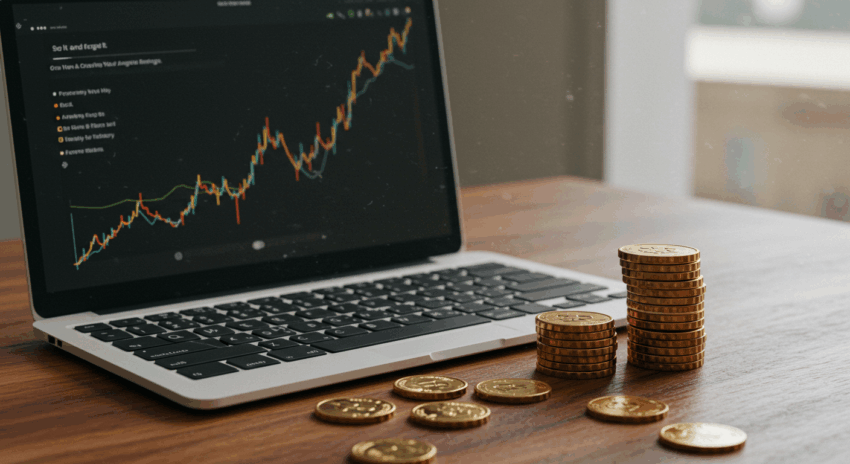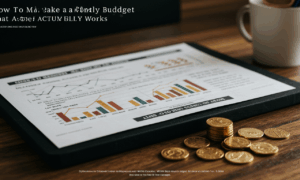Automating your savings is arguably one of the most effective strategies for building wealth, yet many people overlook its simplicity and power. Do you ever get to the end of the month and wonder where all your money went? Do you find that despite your best intentions, you struggle to consistently set money aside? If so, you’re not alone. The challenge often lies not in the desire to save, but in the discipline and memory required to do it manually. Fortunately, we live in a digital age where technology can handle the heavy lifting for you. This article will explore how you can leverage modern tools and applications to make saving money an effortless, automatic background process, helping you reach your financial goals faster than you thought possible.
We’ll break down what automated saving is, the different types of technology available to help you, and how to choose the right tool for your personal financial journey. By the end, you’ll have a clear roadmap to putting your savings on autopilot.
What Exactly is Automated Saving?
At its core, automated saving is a ‘set it and forget it’ system where money is automatically moved from one account (like your checking account) to another dedicated savings or investment account without any manual action on your part. Think of it like a recurring bill payment, but instead of paying a company, you are paying your future self first. The transfer happens on a schedule you determine—typically after each paycheck—ensuring that your savings goals are prioritized before you have a chance to spend the money elsewhere.
The primary benefit of this method is psychological. It removes the friction and decision-making from the act of saving. When you have to consciously decide to move money, it’s easy to procrastinate or rationalize a purchase instead. Automation bypasses this internal debate entirely. It builds a powerful financial habit through consistency, which is the true key to long-term financial success. A small, consistent amount saved regularly will almost always outperform large, sporadic savings efforts over time.

Types of Technology and Tools to Automate Your Savings
The financial technology landscape is filled with innovative tools designed to make saving easier. They generally fall into a few key categories, each catering to different needs and personalities. Understanding these categories will help you find the perfect fit.
1. All-in-One Budgeting and Savings Apps
These applications are the command centers of your financial life. By linking all your bank accounts, credit cards, and loans, they provide a complete, real-time picture of your cash flow. Their power lies in analysis and rule-based automation.
- What they do: They track your income and spending, automatically categorize your transactions, and help you create a budget. Based on this data, you can identify areas where you can cut back.
- How they automate savings: Most of these platforms allow you to set up custom rules. For example, you can create a rule to transfer $100 to your savings account every Friday or to move 10% of every deposit over $500 into a separate savings pot. They empower you to act on the insights they provide, turning budgeting into a proactive savings strategy. For more strategies, you can explore our general Savings section.
2. Micro-Saving “Round-Up” Apps
If the idea of transferring a large sum of money at once feels intimidating, round-up apps offer a gentler, more gradual approach. They are built on the principle of micro-savings—the idea that small, frequent contributions can add up to a significant amount over time.
- What they do: After linking to your debit or credit card, these apps round up every purchase you make to the nearest dollar and transfer the spare change into a savings or investment account.
- Practical Example: You buy a coffee for $4.30. The app rounds the purchase up to $5.00 and automatically moves the $0.70 difference into your savings. It’s like a digital change jar that fills up without you even noticing. While each transaction is small, the cumulative effect over a year can be substantial, often amounting to hundreds of dollars saved with zero effort.
3. Automated Transfers within High-Yield Savings Accounts (HYSAs)
This is a classic, powerful method supercharged by modern banking. A High-Yield Savings Account (HYSA) is a type of savings account that typically offers interest rates significantly higher than those at traditional brick-and-mortar banks. Many online banks that offer these excellent financial products also have robust online platforms and mobile apps with built-in automation features.
- What they do: An HYSA makes your saved money work for you by earning more interest, accelerating your progress through the power of compound interest.
- How to automate: The most direct way to use an HYSA is to set up a recurring transfer from your primary checking account. You can schedule a fixed amount (e.g., $250) to be transferred on the 1st and 15th of every month, coinciding with your paydays. This ensures your savings goal is met before any other discretionary spending occurs. It’s a simple yet profoundly effective strategy for building an emergency fund or saving for a major goal.
How to Choose the Right Savings Tool for You
With so many options, selecting the right tool depends on your personal style and financial goals. Here are a few factors to consider:
- Your Personality: Are you a hands-on person who loves digging into spreadsheets and data? An all-in-one budgeting app might be perfect for you. Or do you prefer a completely hands-off, “set it and forget it” approach? A simple recurring transfer to an HYSA or a round-up app could be a better fit.
- Your Financial Goals: Are you saving for a short-term goal like a vacation, or a long-term one like a down payment on a house? For larger goals, the higher interest rates of an HYSA combined with substantial, automated transfers are ideal. For building an initial savings habit, micro-saving apps can be a fantastic starting point.
- Fees and Security: Always check the fee structure. Some apps charge a monthly subscription, while others are free but may have other costs. Most importantly, ensure any app you use has bank-level security, including encryption and two-factor authentication, to protect your sensitive financial data.
Disclaimer: It is crucial to understand that this article is for informational purposes only and does not constitute financial or investment advice. The tools mentioned can be powerful aids for saving, but any decision involving your money, especially when it crosses into the world of investment, should be made after careful personal research or consultation with a qualified financial advisor.
Conclusion: Put Your Savings on Autopilot Today
Technology has fundamentally changed how we manage our money, removing many of the traditional barriers to saving. By leveraging automation, you can transform saving from a daunting monthly chore into an effortless background process that works tirelessly for your future. Whether you choose a comprehensive budgeting app, a micro-savings tool, or a straightforward recurring transfer to an HYSA, the most important step is to start. By paying yourself first automatically, you are building a disciplined habit that will serve as the foundation of your financial security for years to come.
Frequently Asked Questions (FAQ)
Is it safe to link my bank account to a savings app?
This is a valid and important concern. Reputable financial technology apps invest heavily in security. When choosing an app, look for features like 256-bit AES encryption (bank-level security), two-factor authentication (2FA), and transparency about their security practices. Stick to well-known and highly-rated applications. For accounts that hold your money, ensure they are protected by FDIC (for bank deposits) or SIPC (for investment accounts) insurance, which protects your funds up to a certain limit in case the institution fails.
Can I really save a significant amount of money with round-up apps?
While round-up apps are excellent for building the habit of saving and getting started, they are best viewed as a supplementary strategy rather than a primary one. The amount you save depends entirely on your spending frequency. For most people, this might amount to $30-$70 per month. To reach substantial goals, it’s highly effective to combine the round-up method with a more significant, fixed automatic transfer to a High-Yield Savings Account. Think of round-ups as the booster and scheduled transfers as the main engine of your savings plan.





